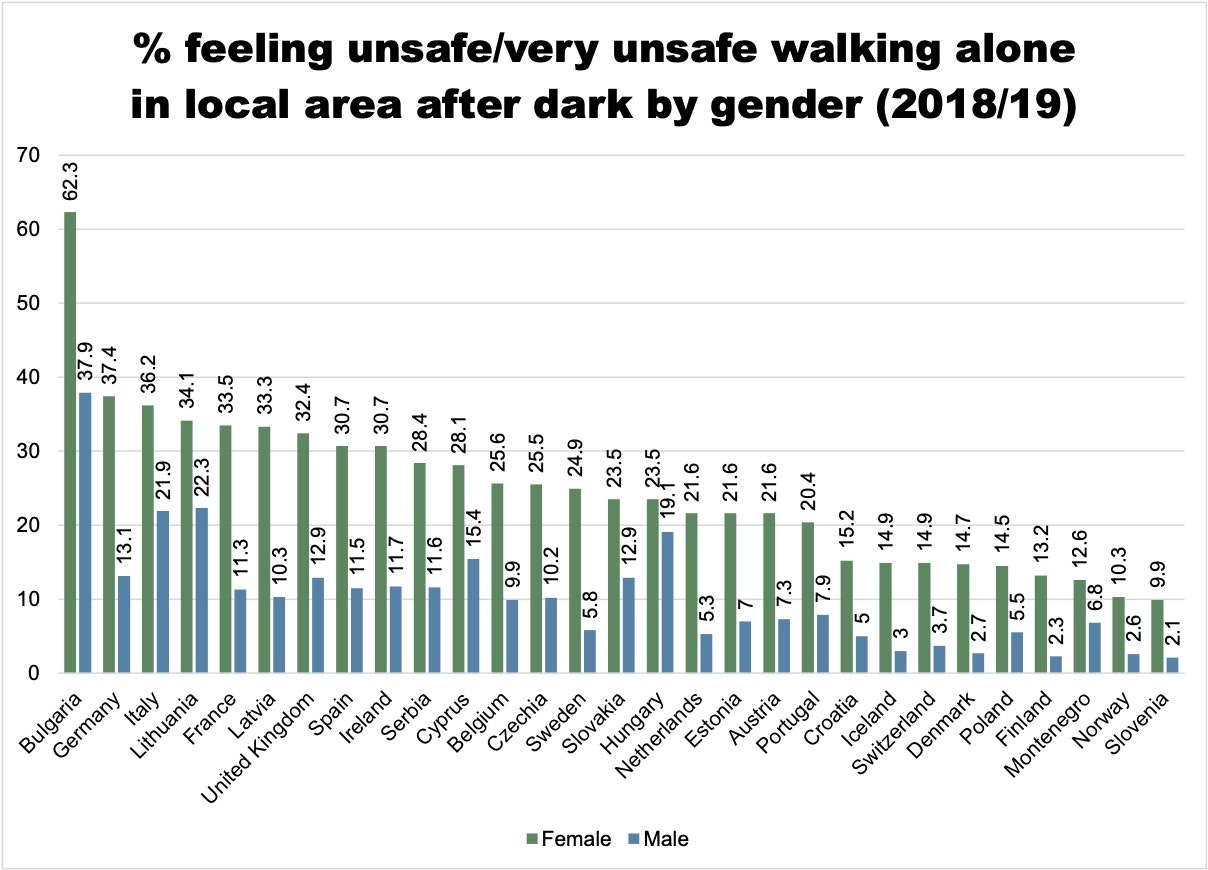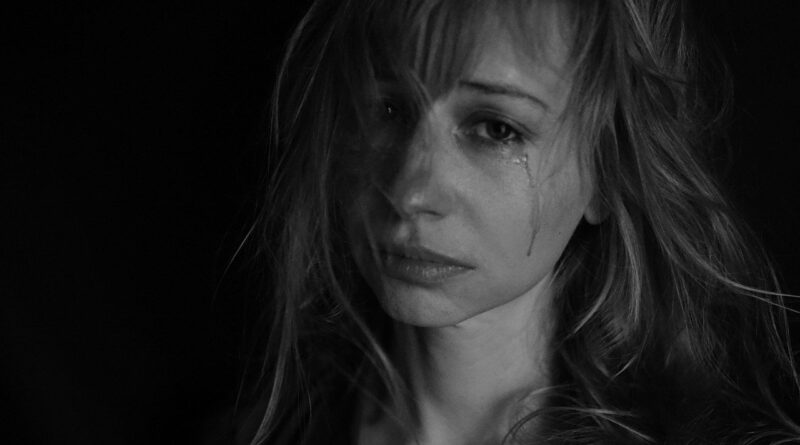Survey shows 32% of British women don’t feel safe walking alone at night – compared to just 13% of men
The recent disappearance of Sarah Everard in London has led to searching conversations about the safety of women in the United Kingdom. It prompted many women to share their own stories of feeling constrained in moving around in their local area. CCTV footage of Everard before she vanished was a reminder for many women and a wake up call for many men.
And indeed, data shows that 32% of women in the UK feel unsafe or very unsafe when walking alone in their local area at night. Meanwhile, only 13% of men expressed the same concern.
There have been hundreds of personal stories from women on social media discussing how they are constrained by safety concerns when walking around after dark. These have been particularly resonant while much of Europe is living under various states of lockdown. For many people, getting out of the home whenever possible has become an important coping mechanism. During the winter months, and especially for people working full time from home, that often necessarily means going out when it’s dark – or not at all.
Data from the European Social Survey shows just how different the experiences of men and women are when it comes to the fundamental freedom of being able to walk alone at night. In all 29 countries included in the ESS, men reported feeling safer than women while walking alone in their local area after dark. It’s a question we’ve been asking every two years since 2002/03. Assessing our most recent data (2018/19), we find significant differences between men and women.
In Bulgaria, a staggering 62% of female respondents feel unsafe or very unsafe. The figure in Bulgaria is also the highest in Europe for male respondents, 38% of whom said they would not feel safe – but most men there still report feeling safer than women by a substantial margin.

In Germany 37% of women felt unsafe and in Italy 36%. In Lithuania and France, 34% of women felt unsafe and in Latvia 33%. For Spain and Ireland the figure was 31%.
In contrast, the proportion of male respondents who felt unsafe was only 13% in Germany, 12% in Spain and Ireland, 11% in France and 10% in Latvia.
Even in relatively safe countries such as Denmark, Finland and Iceland, the gender divide remains. Men are are still five times less likely than women to report being fearful at night walking in their local area.
In a group of five other countries – Slovenia, Sweden, the Netherlands, Switzerland and Norway – women are four times more likely to feel unsafe than men.
Progress?
We can see by looking back at the data from 2002/03 – when we first ran our survey – that some progress has been made. Back then, 52% of female respondents in the UK reported feeling unsafe after dark, compared to about a third (32%) 18 years later.
But while this is a significant and welcome improvement, overall gender differences stubbornly persist. The figure dropped for men over the same period, from 20% to 13% feeling unsafe, meaning British men were 2.6 times more likely to feel safe than women in 2002/03 and 2.5 times in 2018/19. So, it seems everyone feels safer overall but gender differences remain.
This trend is similar across Europe: overall feelings of safety have generally improved for both genders but women remain between 2.5 and 5.7 times more likely to feel unsafe than men in almost all countries.
Norway provides an example of a country where the gender gap on this issue has significantly narrowed over time. In 2002/03, 23% of female respondents and 3% of men reported feeling unsafe or very unsafe walking in their local area after dark. In 2018/19, this had dropped to 13% of female respondents with the male figure basically unchanged (2%).
Perhaps policymakers, the police and communities might look to countries such as Norway for inspiration on how to work towards making women feel just as safe as men in their local area.

